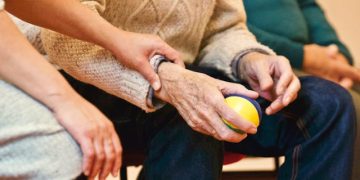As the aging population continues to grow, the integration of assistive technology in elderly home care has become increasingly pivotal. These technological innovations play a transformative role in enhancing the quality of life for seniors by promoting independence, safety, and overall well-being within the familiar confines of their homes. From smart home devices to wearable technologies, the landscape of assistive technology is vast, offering tailored solutions to meet the diverse needs of elderly individuals receiving home care.

Smart Home Devices
One of the cornerstones of assistive technology in elderly home care is the array of smart home devices designed to simplify daily tasks and enhance safety. Voice-activated assistants, like Amazon's Alexa or Google Home, empower seniors to control lights, thermostats, and even make phone calls using voice commands. These intuitive systems reduce reliance on physical effort and create a more accessible home environment.
Smart home security systems contribute significantly to safety and peace of mind. With features such as motion sensors, doorbell cameras, and emergency response capabilities, these systems provide an additional layer of security, enabling seniors to feel secure in their homes and allowing caregivers to monitor activities remotely.
Wearable Technologies
Wearable technologies have evolved beyond fitness trackers; they now offer real-time health monitoring capabilities that are invaluable in elderly home care. Devices like smartwatches can track vital signs, monitor sleep patterns, and even detect falls. This constant health monitoring enables caregivers and healthcare providers to stay informed about the well-being of elderly individuals, facilitating timely interventions when needed.
GPS-enabled wearables contribute to the safety of seniors who may have a tendency to wander or those with cognitive impairments. These devices allow caregivers to track the location of the elderly individual, providing an extra layer of security while preserving their independence.
Medication Management Systems
Seniors often contend with complex medication regimens, and assistive technology has stepped in to streamline this aspect of their care. Medication management systems, such as automated pill dispensers with alarms and reminders, help seniors adhere to their prescribed schedules. Some advanced systems even connect to smartphones or caregivers' devices, sending alerts if medications are missed.
Telehealth Services
Telehealth services have emerged as a game-changer in elderly home care assistance, bridging the gap between seniors and healthcare professionals. Virtual consultations allow for remote monitoring of health conditions, medication management, and routine check-ups without the need for frequent visits to healthcare facilities. This not only enhances accessibility but also reduces the physical and logistical challenges often associated with traditional healthcare appointments.
Adaptive Mobility Aids
For seniors with mobility challenges, adaptive mobility aids powered by technology offer enhanced independence within the home. Electric wheelchairs and scooters equipped with navigation technology can help seniors move around with greater ease, overcoming physical barriers and promoting a sense of autonomy.
Embracing Cognitive Assistive Technologies
Cognitive decline can present significant challenges for seniors, but assistive technology has stepped in to offer cognitive support. Memory aids, such as digital calendars, reminder apps, and voice-activated devices, help seniors manage daily tasks, appointments, and important dates, fostering a sense of control and self-sufficiency.
Overcoming Social Isolation
Social isolation is a common concern among the elderly, especially for those receiving home care. Virtual communication tools, including video calling apps and social media platforms, enable seniors to stay connected with family and friends. These technologies contribute to emotional well-being by reducing feelings of loneliness and fostering meaningful connections.
Challenges and Considerations
While assistive technology in elderly home care brings about numerous benefits, it is essential to recognize and address potential challenges. The human element remains crucial, as seniors may initially encounter a learning curve or require ongoing support in adopting and using these technologies. Caregivers and family members play a vital role in providing guidance, encouragement, and troubleshooting assistance.
In conclusion, the integration of assistive technology in elderly home care represents a profound shift in how we approach aging and caregiving. By harnessing the power of smart devices, wearables, telehealth services, and other technological advancements, we empower seniors to age in place with dignity and independence. As these technologies continue to evolve, the landscape of elderly home care will be marked by innovation, compassion, and a commitment to enhancing the overall well-being of our aging population.

























